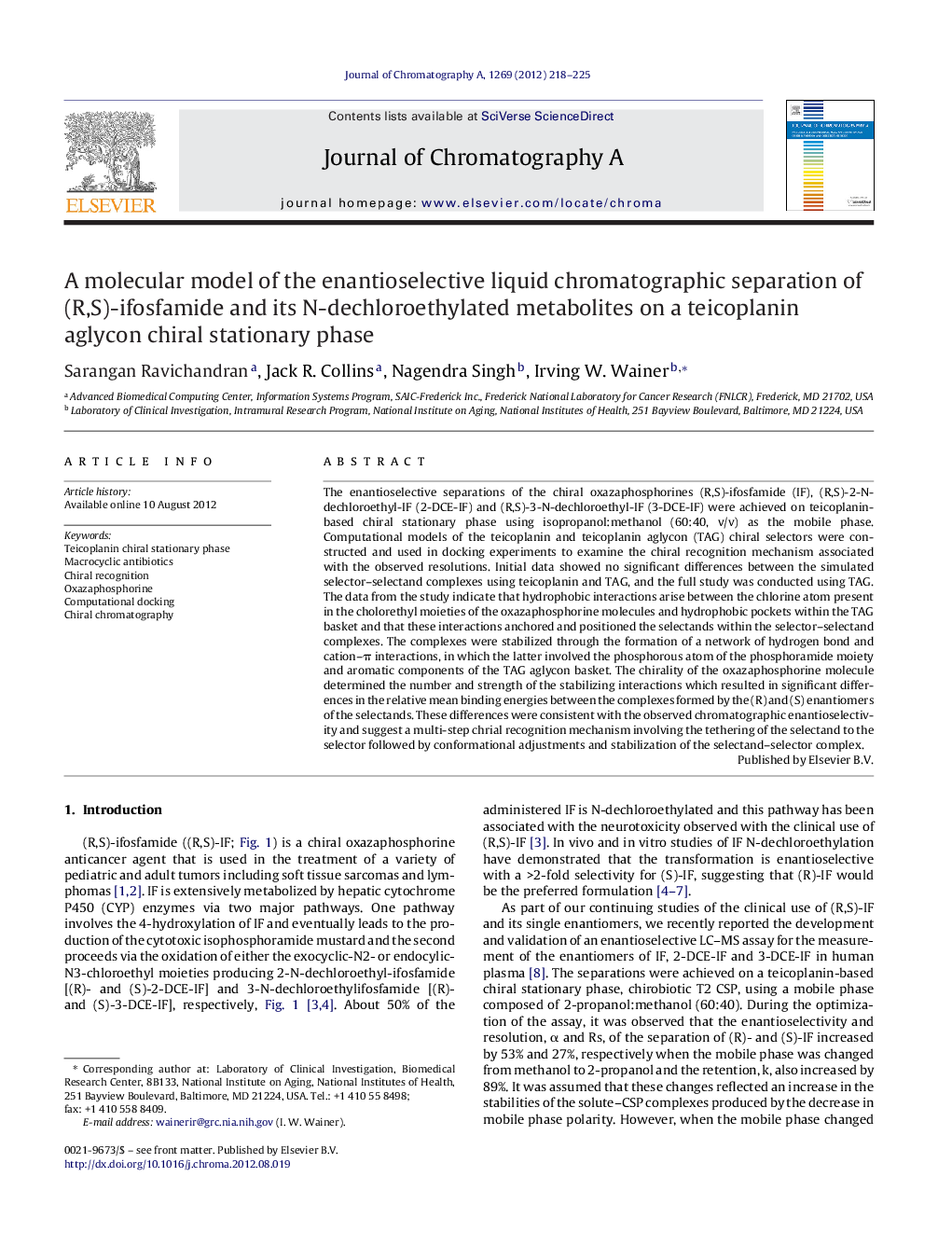| Article ID | Journal | Published Year | Pages | File Type |
|---|---|---|---|---|
| 1201780 | Journal of Chromatography A | 2012 | 8 Pages |
The enantioselective separations of the chiral oxazaphosphorines (R,S)-ifosfamide (IF), (R,S)-2-N-dechloroethyl-IF (2-DCE-IF) and (R,S)-3-N-dechloroethyl-IF (3-DCE-IF) were achieved on teicoplanin-based chiral stationary phase using isopropanol:methanol (60:40, v/v) as the mobile phase. Computational models of the teicoplanin and teicoplanin aglycon (TAG) chiral selectors were constructed and used in docking experiments to examine the chiral recognition mechanism associated with the observed resolutions. Initial data showed no significant differences between the simulated selector–selectand complexes using teicoplanin and TAG, and the full study was conducted using TAG. The data from the study indicate that hydrophobic interactions arise between the chlorine atom present in the cholorethyl moieties of the oxazaphosphorine molecules and hydrophobic pockets within the TAG basket and that these interactions anchored and positioned the selectands within the selector–selectand complexes. The complexes were stabilized through the formation of a network of hydrogen bond and cation–π interactions, in which the latter involved the phosphorous atom of the phosphoramide moiety and aromatic components of the TAG aglycon basket. The chirality of the oxazaphosphorine molecule determined the number and strength of the stabilizing interactions which resulted in significant differences in the relative mean binding energies between the complexes formed by the (R) and (S) enantiomers of the selectands. These differences were consistent with the observed chromatographic enantioselectivity and suggest a multi-step chrial recognition mechanism involving the tethering of the selectand to the selector followed by conformational adjustments and stabilization of the selectand–selector complex.
► 3D models of teicoplanin and vancomycin chiral stationary phases reported. ► A molecular model that describes experimentally observed chiral separation. ► Initial model to predict enantiomeric elution order on a teicoplanin CSP.
